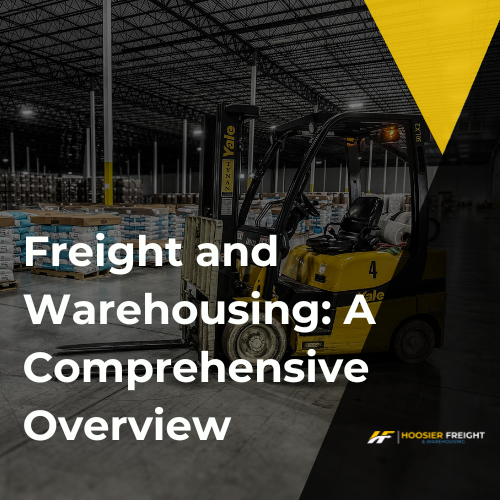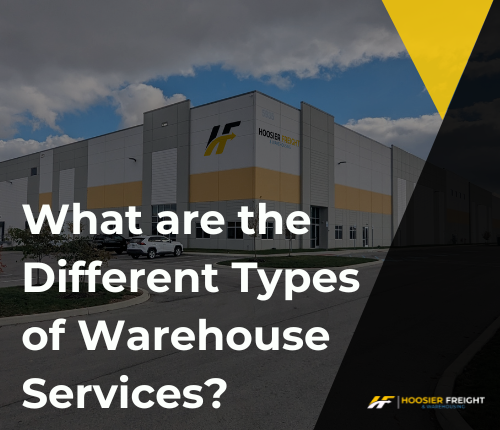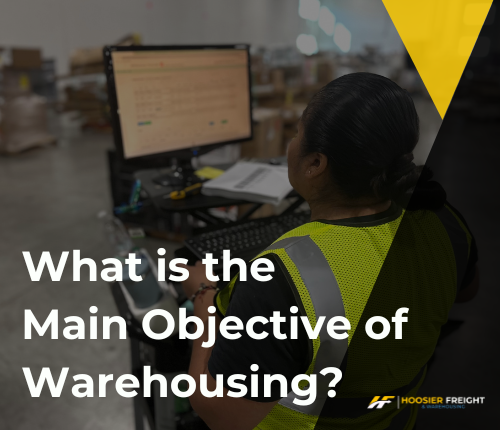
Freight and Warehousing: A Comprehensive Overview
The world of freight and warehousing is a dynamic and essential part of the global supply chain, playing a critical role in the economy’s functioning. With the advent of online shopping and the globalization of markets, the demand for sophisticated, efficient warehousing and transportation solutions has skyrocketed. According to a report by Statista, the global logistics market size was valued at approximately $8.6 trillion in 2020 and is expected to grow significantly in the coming years. This growth underscores the increasing importance of warehousing and freight services in today’s economy.
What is Warehousing?
Warehousing involves storing goods in a designated space for a temporary period until they are needed for distribution or sale. It’s a key component of the supply chain management process, offering businesses a way to manage inventory, reduce overhead costs, and ensure products are readily available for customers. The evolution of warehousing has been significant, with modern facilities now incorporating advanced technologies like robotics, artificial intelligence, and data analytics to optimize operations.
The Importance of Warehousing in the Supply Chain
Warehousing is not just about storage. It plays a pivotal role in the supply chain, affecting everything from inventory management to order fulfillment. A well-organized warehouse can significantly enhance a business’s operational efficiency, reduce delivery times, and improve customer satisfaction. According to a survey by the Warehouse Education and Research Council (WERC), 85% of logistics professionals believe that effective warehousing is a key factor in maintaining a competitive edge.
What is the Difference Between Warehousing and Logistics?
The terms “warehousing” and “logistics” are often used interchangeably, but they refer to distinct aspects of the supply chain. Logistics encompasses the broader process of managing how resources are acquired, stored, and transported to their final destination. In contrast, warehousing specifically deals with the storage of goods. Warehouse service providers are integral to the logistics chain, offering solutions that facilitate the efficient flow of goods.
Expert Insight on Warehousing vs. Logistics
Industry experts highlight the symbiotic relationship between warehousing and logistics. As noted by Dr. John Smith, a supply chain management professor, “Warehousing provides the necessary storage solutions that logistics needs to transport goods effectively. Without efficient warehousing, the logistics chain would face significant bottlenecks.”
What are the 4 Types of Warehouses and Distribution Centers?
Warehouses can be classified into four main types: public, private, bonded, and cooperative. Each serves a unique purpose within the supply chain.
Public Warehouses: Operated as independent businesses that offer storage facilities to the general public on a rental basis.
- Private Warehouses: Owned and operated by large retailers or manufacturers to store exclusively their goods.
- Bonded Warehouses: Secured facilities where goods subject to customs duties are stored until the duties are paid or the goods are cleared for export.
- Cooperative Warehouses: Owned and operated by cooperative members, offering storage and distribution services to members at cost-effective rates.
The choice between these warehouses depends on several factors, including the nature of the goods, the required storage period, and the financial considerations of the business.
Transportation and Warehousing: The 48 vs. 49 Classification
The distinction between “transportation and warehousing 48 vs. 49” refers to the North American Industry Classification System (NAICS) codes, where “48” denotes transportation and “49” denotes warehousing and storage. This classification underscores the interconnectedness of transportation and warehousing within the logistics ecosystem.
What is Warehousing in Transportation?
The relationship between warehousing and transportation is a critical aspect of the supply chain. Efficient warehousing solutions can significantly enhance transportation efficiency by ensuring goods are systematically stored, organized, and ready for distribution. This synergy between transportation and warehousing companies is essential for designing logistics strategies that minimize costs while maximizing delivery speed and reliability.
The Role of Technology in Enhancing Warehousing and Transportation
Advancements in technology have revolutionized the warehousing and transportation sectors. For instance, the integration of Warehouse Management Systems (WMS) with Transportation Management Systems (TMS) has enabled businesses to achieve greater visibility and control over their inventory and distribution networks. According to a report by the American Logistics Aid Network (ALAN), companies that leverage technology in their warehousing and transportation operations can reduce their delivery times by up to 30%.
What is a Freight Warehouse?
A freight warehouse is specifically designed for the storage of freight, offering solutions for the temporary holding of goods in transit. These facilities play a crucial role in the logistics chain, acting as strategic points where freight can be securely stored, repackaged, or consolidated before continuing its journey. Freight warehouses are vital for managing the logistical challenges associated with the movement of goods, providing a flexible and efficient solution for freight storage.
The Importance of Freight Storage Warehouses in Global Trade
Freight storage warehouses are indispensable in the context of global trade. They facilitate international commerce by providing secure storage solutions for goods awaiting customs clearance or further transportation. According to the International Federation of Freight Warehouses (IFFW), freight warehouses contribute significantly to the efficiency of the global supply chain, enabling businesses to navigate the complexities of international shipping and customs procedures.
What Services are Offered in a Warehouse?
Warehousing services have evolved beyond basic storage to include a wide range of value-added services. These include inventory management, order fulfillment, kitting and assembly, and reverse logistics. By offering these services, warehouses can provide comprehensive solutions that address the diverse needs of businesses.
Exploring Warehousing Services: Beyond Storage
The broad term “warehousing services,” meaning originally a small suite of rather simple storage services, has expanded to also encompass various functions that enhance the efficiency of the supply chain. For instance, many warehouses now offer sophisticated order fulfillment services, utilizing advanced technologies to automate picking and packing processes. This shift towards offering multifaceted warehousing services reflects the growing demand for integrated logistics solutions that can streamline operations and reduce costs for businesses.
The Role of Technology in Warehousing Services
Technology plays a pivotal role in the transformation of warehousing services. Warehouse Management Systems (WMS), for instance, provide real-time data on inventory levels, order status, and warehouse operations, enabling businesses to make informed decisions and improve operational efficiency. Additionally, the use of automation and robotics in warehouses has significantly reduced manual labor, increased accuracy in order fulfillment, and expedited shipping processes.
According to a report by MHI, the adoption of robotics and automation in warehousing is expected to increase by 73% over the next five years, highlighting the industry’s move towards more technologically advanced warehousing solutions. This technological shift not only enhances the capabilities of warehousing services but also positions warehouses as critical nodes in the supply chain that offer more than just storage solutions.
How Does Freight Delivery Work?
Understanding the nuts and bolts of freight delivery is essential for businesses that rely on the timely and efficient transport of goods. The freight delivery process encompasses several key steps: route planning, freight consolidation, transportation, tracking, and final delivery. Each step is designed to optimize the delivery process, ensuring goods are transported safely and efficiently to their destination.
The Process of Freight Delivery
- Route Planning: Identifying the most efficient and cost-effective route for transporting goods.
- Freight Consolidation: Combining shipments from multiple shippers into one full container load to reduce transportation costs.
- Transportation: The physical movement of goods using various modes of transport, including road, rail, air, and sea.
- Tracking: Monitoring the movement of goods in real-time to provide updates to businesses and customers.
- Final Delivery: The last step in the process, where goods are delivered to the end customer or business.
Enhancing Efficiency in Freight Delivery
Efficiency in freight delivery is achieved through strategic planning, technological integration, and effective supply chain management. For instance, utilizing Transportation Management Systems (TMS) can significantly improve route planning and freight consolidation efforts, leading to reduced transportation costs and shorter delivery times. Moreover, advancements in GPS and tracking technologies have enhanced the visibility of freight movements, enabling more accurate and reliable delivery schedules.
Freight and warehousing are indispensable components of the global supply chain, playing vital roles in the storage, management, and transportation of goods. As the logistics industry continues to evolve, the integration of advanced technologies and the expansion of warehousing services are setting new standards for efficiency and reliability. Hoosier Freight and Warehousing remains at the forefront of this transformation, offering innovative solutions that meet the complex needs of modern businesses.
In an increasingly connected and fast-paced world, understanding the dynamics of freight and warehousing is more important than ever. By leveraging the latest trends, technologies, and services, businesses can optimize their logistics operations, reduce costs, and improve customer satisfaction.
Whether you’re a small business looking to streamline your supply chain or a large corporation seeking innovative logistics solutions, Hoosier Freight and Warehousing has the expertise and services to meet your needs. Contact us today to discover how we can help you navigate the complexities of freight and warehousing and transform your logistics operations.



